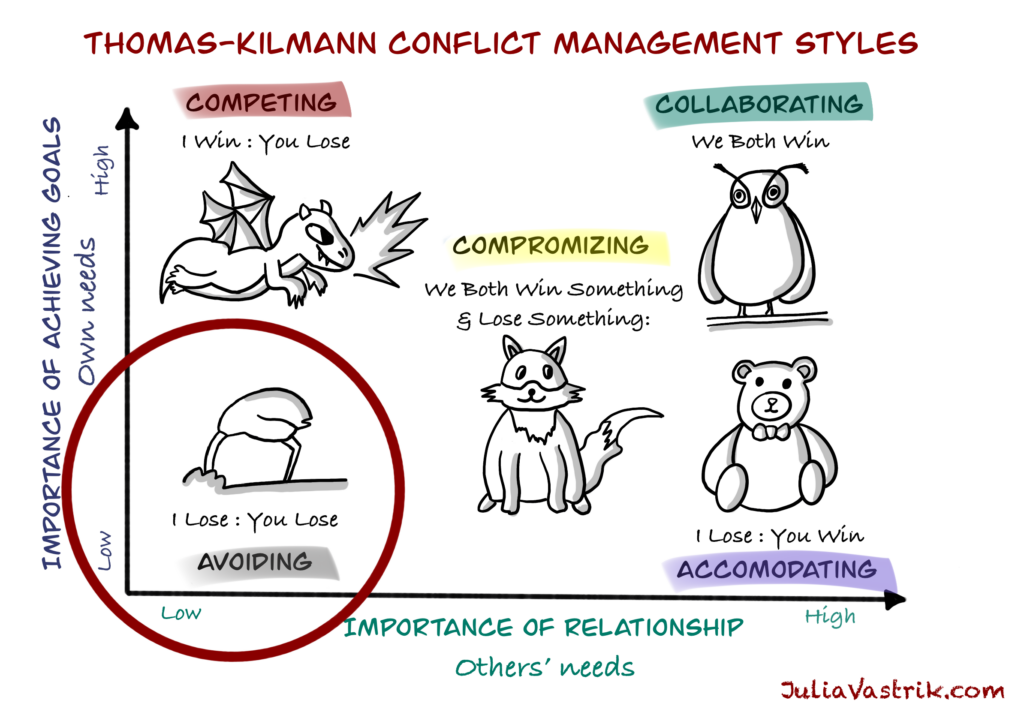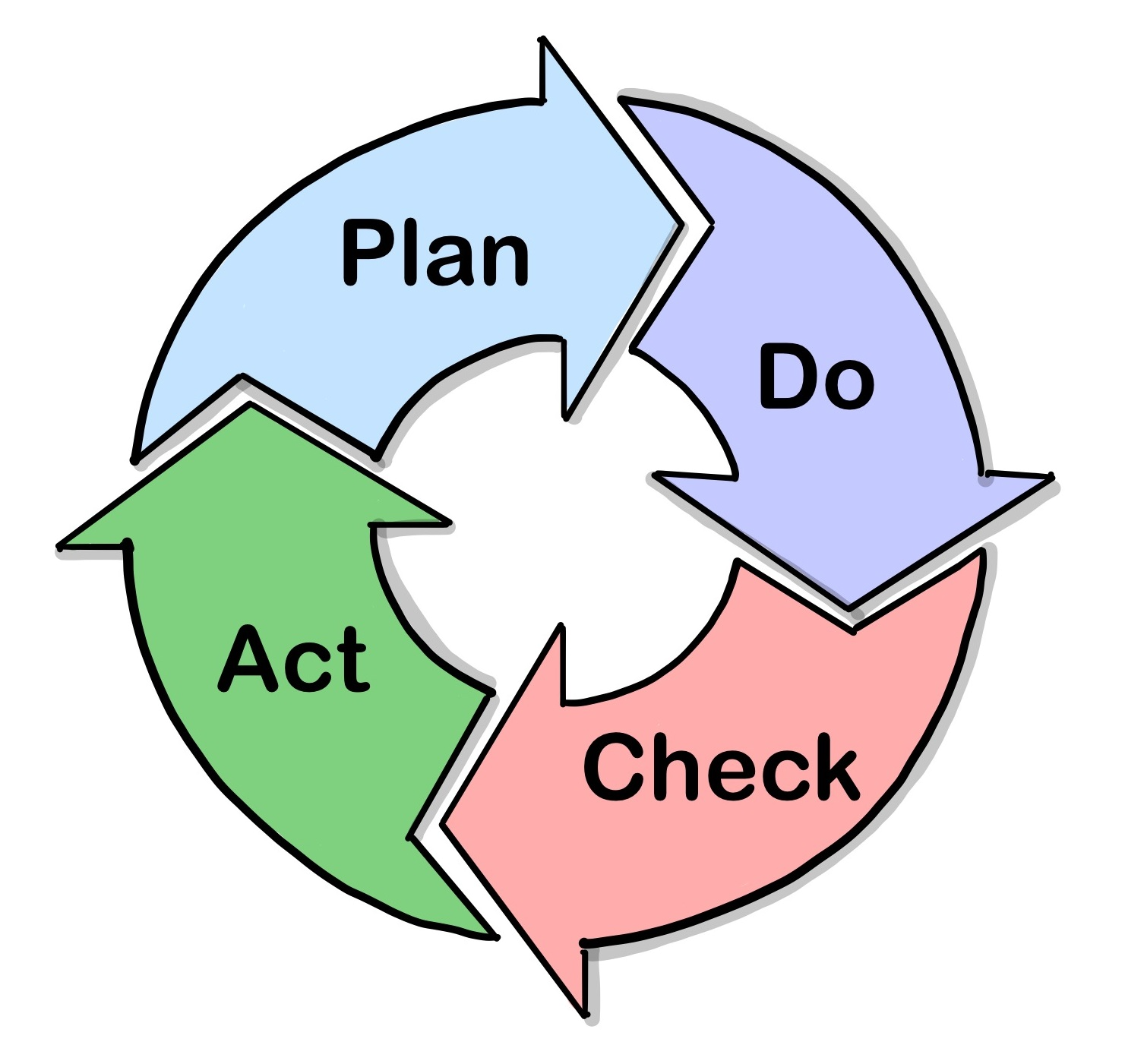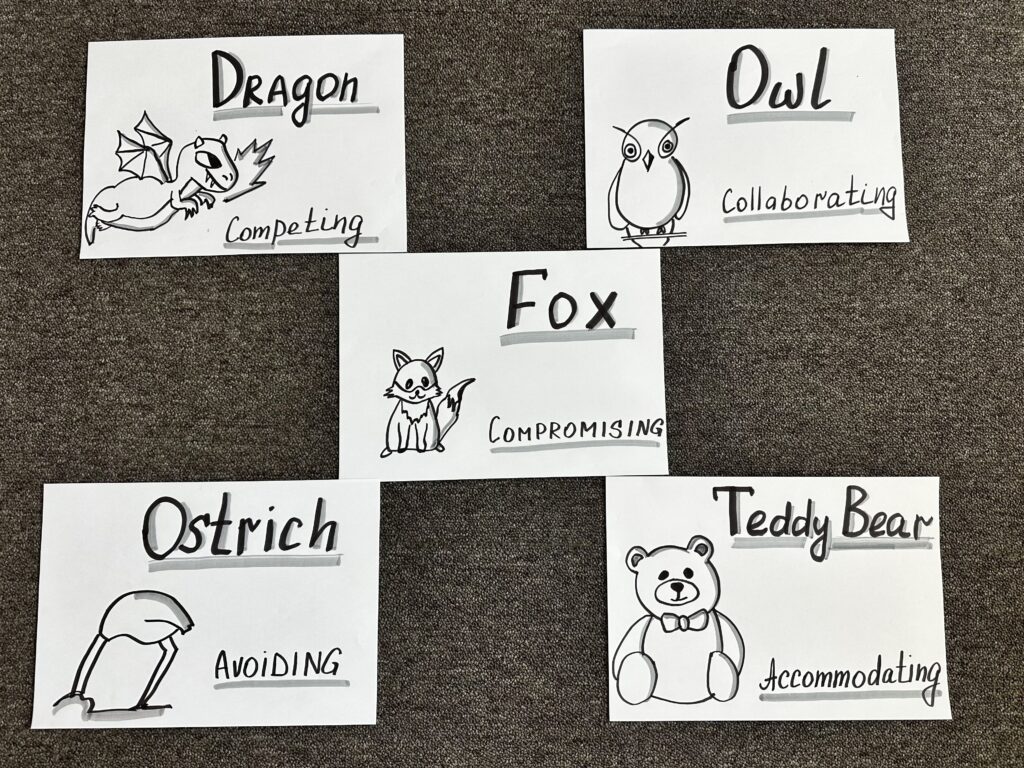Visuals about Conflict Management. Feel free to use these visuals for your work and study.
For many of us, conflicts are something we’d rather avoid at all costs. Some of us cringe at the very mention of the word “conflict,” while for others, conflicts feel more acceptable.
It’s also important to clarify what we mean by conflicts – are we talking about personal disagreements or differences in ideas? Too often, the latter turns into the former – what starts as a discussion about a work-related problem can escalate into personal attacks or name-calling. This is something we must absolutely avoid.

That said, conflicts of interest and differing points of view are natural. We all have different perspectives, experiences, information, strategic focus, and interests – which naturally leads to different viewpoints. And this is really great. It helps us make decisions that are more well-rounded and inclusive, taking this diversity into account. But not only that – it also challenges our assumptions, prevents groupthink, and helps us create more innovative solutions.
To gain these benefits, we need to learn how to handle conflicts without causing “collateral damage.”
The first step is to normalize conflicts and accept that they are inevitable.
The second step is to try approaching them with curiosity rather than defensiveness – focusing on understanding different perspectives rather than proving a point.
And finally, we need to develop the skills to resolve conflicts constructively, turning them into opportunities for mutual understanding, learning, building relationships, and making better decisions.
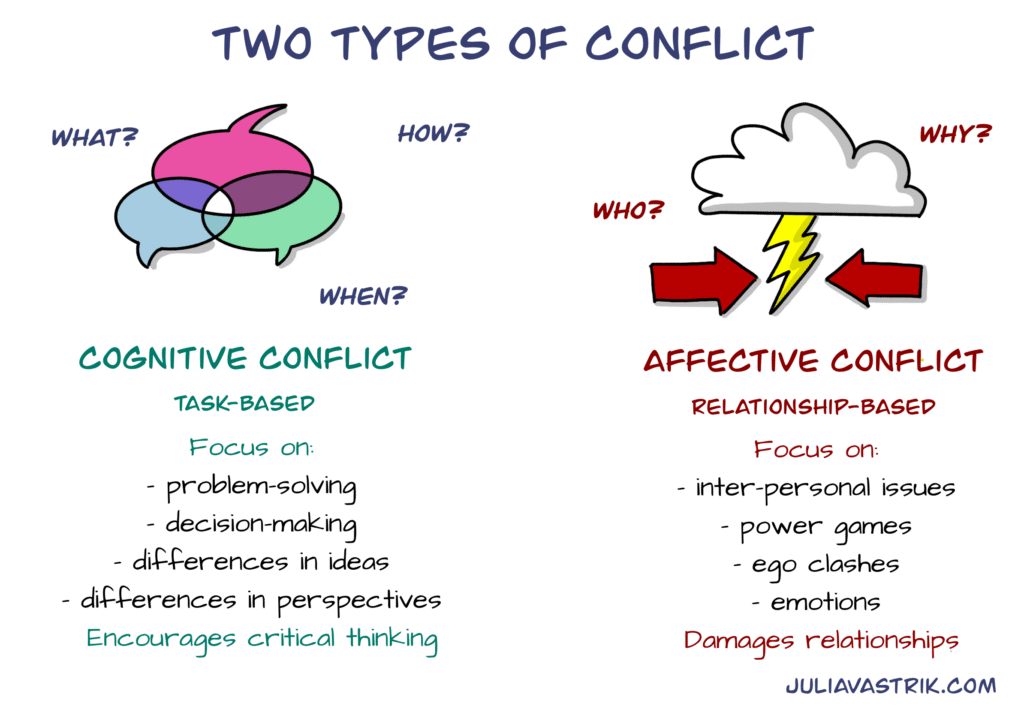
When people cringe at the thought of conflict, they’re usually thinking about affective conflict—the kind that gets personal, emotional, and damaging to relationships.
But even cognitive conflict—the constructive, task-based kind—makes some people uneasy. And for a reason. What starts as a discussion about ideas can quickly turn into ego clashes and power games.
Both can be emotionally draining and exhausting.
Often, we experience any disagreement with our ideas as criticism.
– We assume others are questioning our competence, not just our approach.
– We attribute negative motives or intentions to their words.
– When our hot buttons are pushed, a neutral debate can quickly turn into a personal fight.
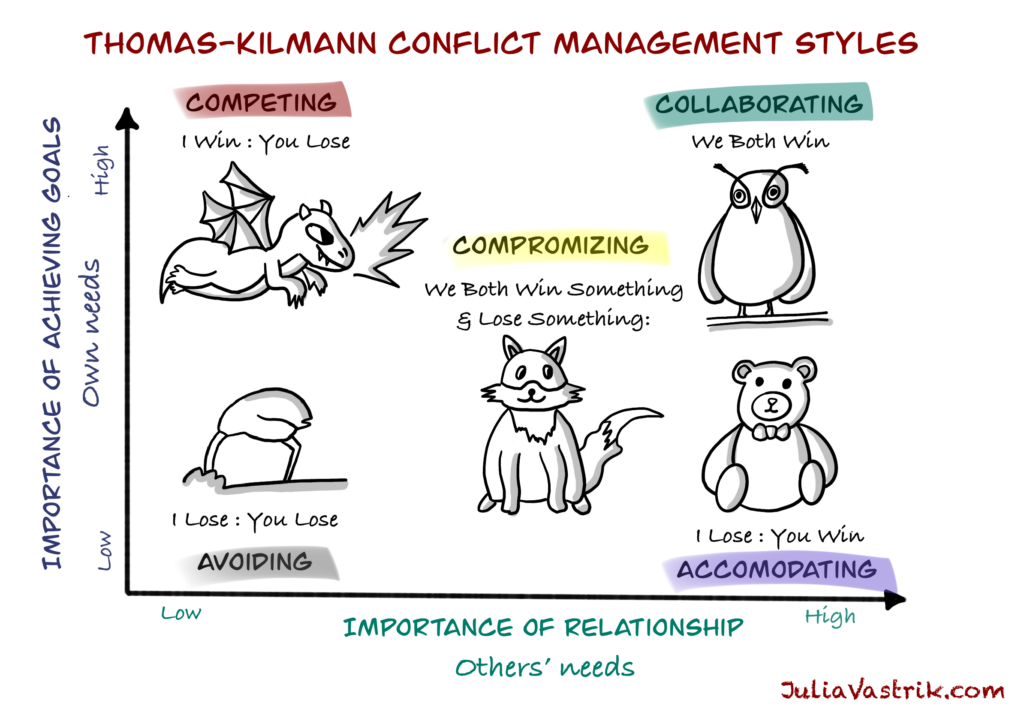
SEE ALSO: How I run “Conflict Management Styles” exercise
So how could we keep cognitive conflict from spiraling into affective conflict?
💡 Frame disagreement as problem-solving, not a personal attack—a collaboration, not a battle.
→ “Let’s explore different perspectives.”
💡 Separate ideas from identity—challenge concepts, not people.
→ “This approach might have challenges we need to consider.”
💡 Set ground rules for respectful debate in teams.
→ “In our team, we challenge ideas, not people.”
💡 Use structured feedback methods like “Yes, and…” instead of “No, but…”.
→ “I see your point, and we might also consider…”
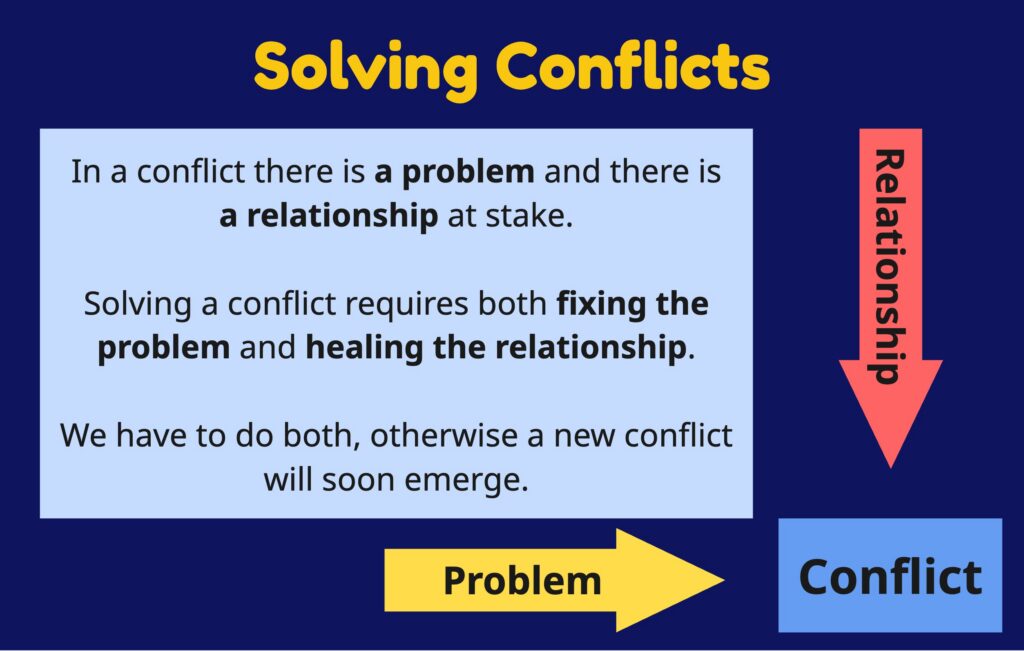
💡 Recognize emotional triggers and pause when tension rises.
→ “I need a moment to collect my thoughts before we continue.”
💡 Find common ground in different perspectives. Ask bridging questions like:
→ “What do we both agree on?”
→ “How can we combine these ideas?”
→ “What shared goal are we both working toward?”
→ “What’s a solution that aligns with both of our goals?”
💡 Reframe the discussion when needed. Ask reframing questions like:
→ “How can we achieve the same outcome differently?”
→ “Is there another approach that meets both our concerns?”
→ “What if we looked at this from the customer’s perspective?”
💡 Take a break when needed and revisit later.
→ “Let’s pause and pick this up with fresh eyes tomorrow.”
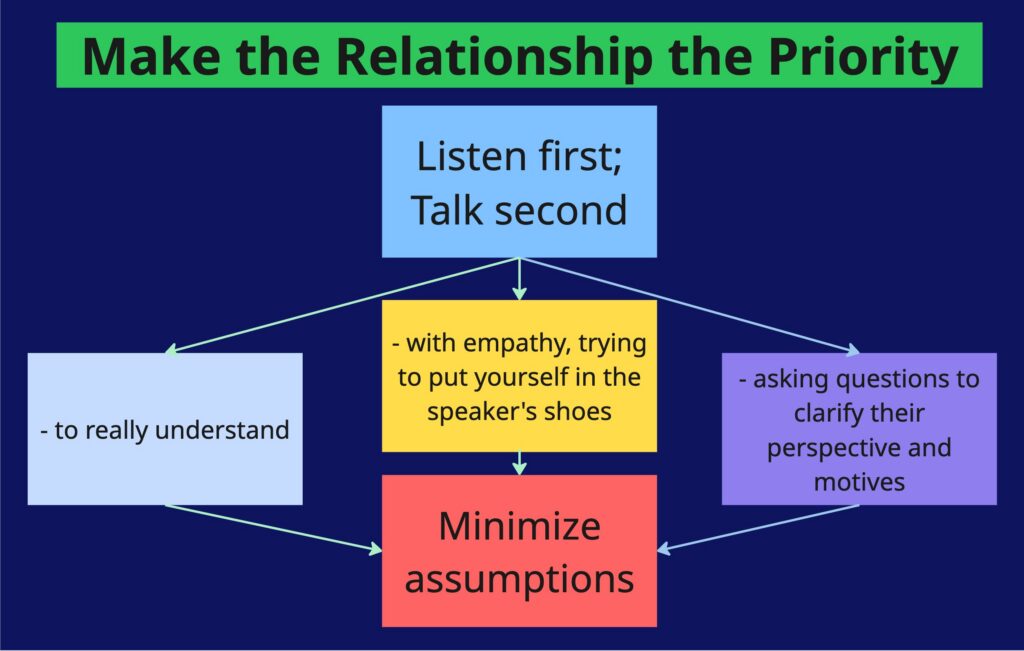
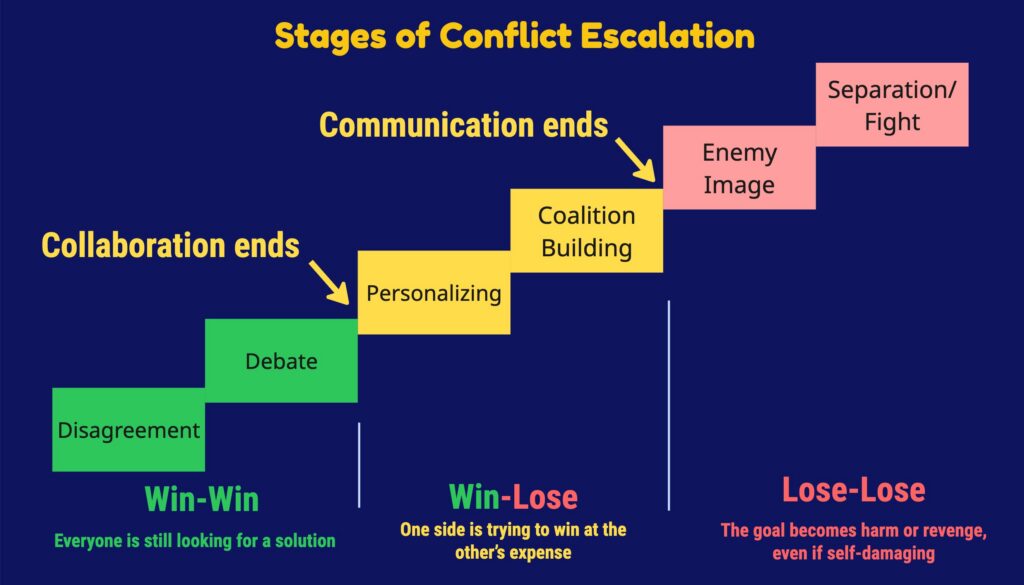
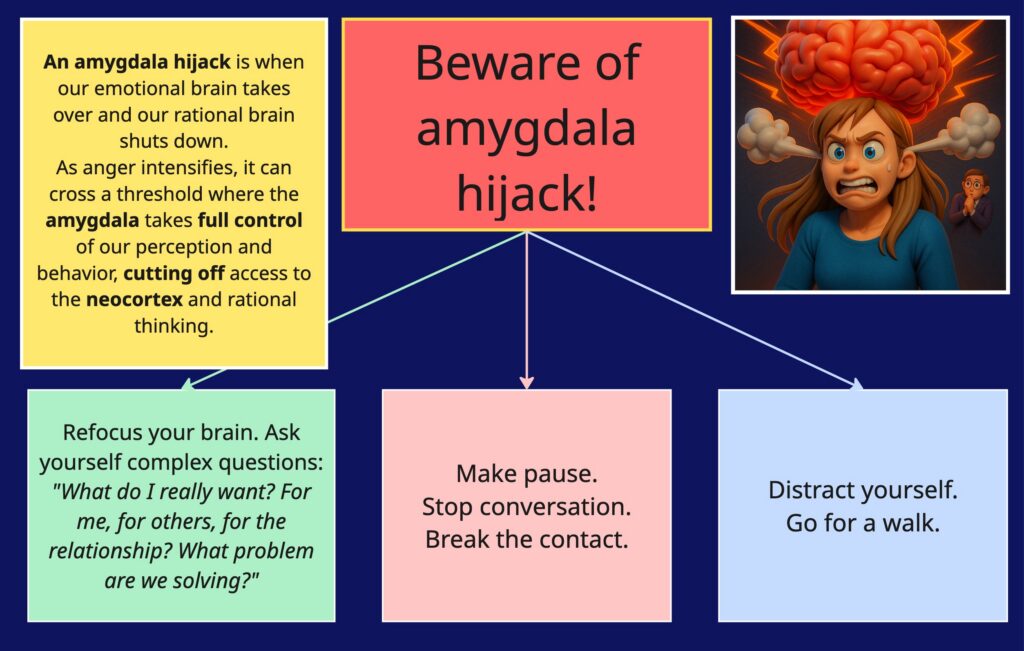

Do you tend to avoid conflicts?
Read The Abilene Paradox.
